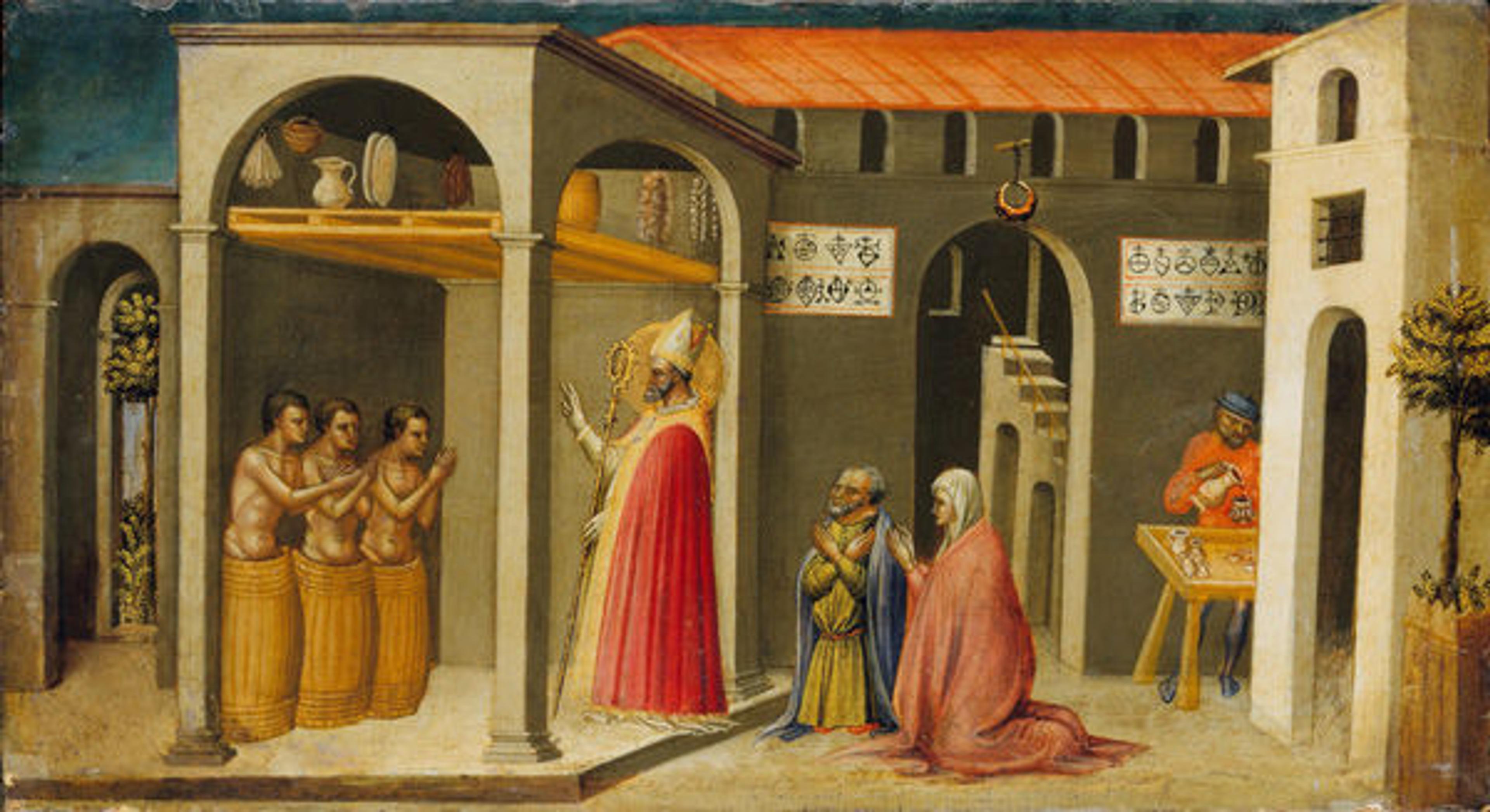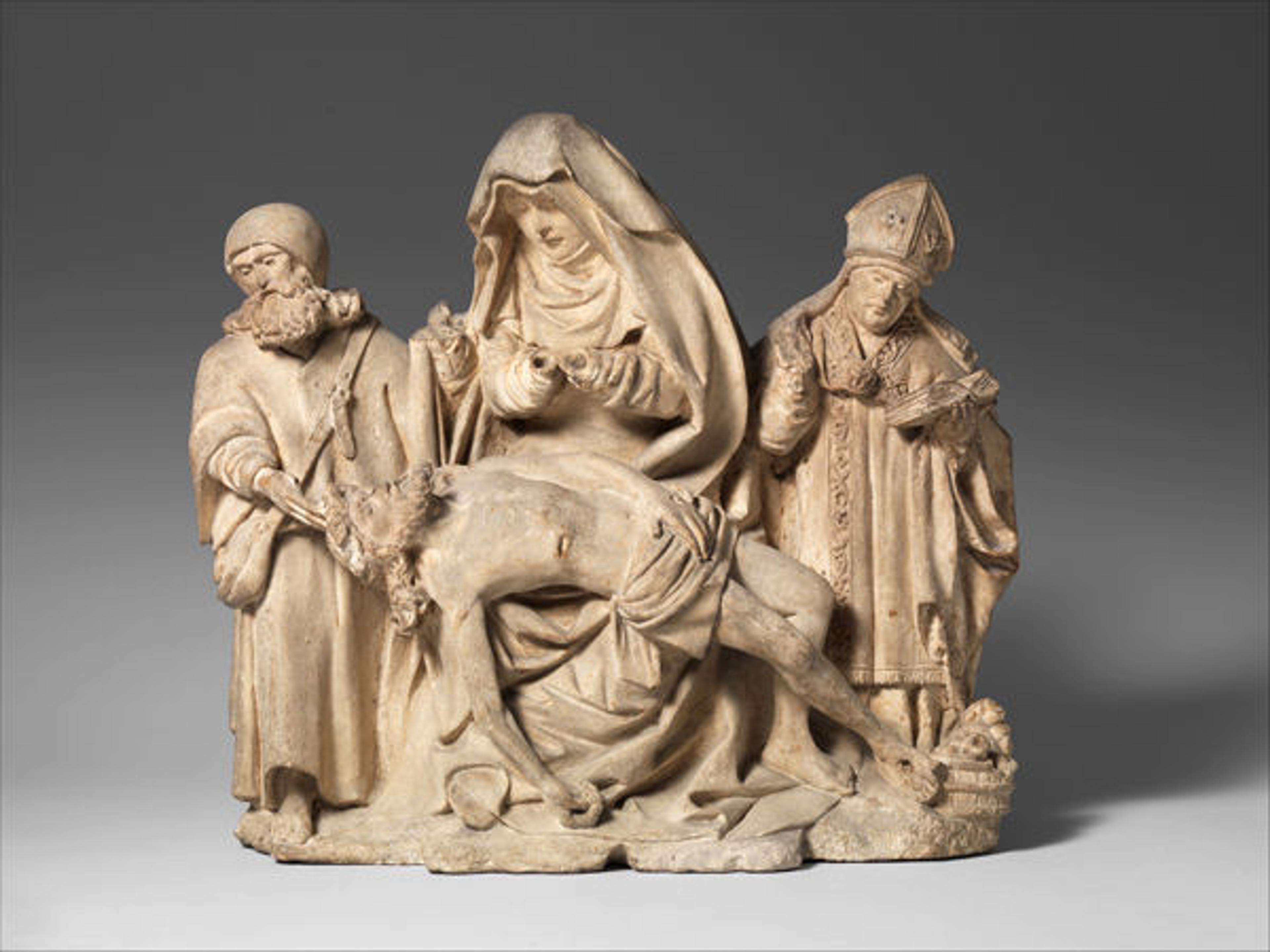In the Nick of Time

Saint Nicholas (detail), 1340–50. Made in Carinthia, Austria. Pot-metal glass, colorless glass, and vitreous paint. The Metropolitan Museum of Art, New York, The Cloisters Collection, 1965 (65.97.5)
«All around the world, the Feast of Saint Nicholas is celebrated in December. So why would I choose to write about "jolly old Saint Nick" this summer? Because two stories from the legend of this saintly bishop, both dealing with innocent young people who are in danger, have become suddenly and unexpectedly resonant for me.»
The first is recorded in the thirteenth-century Golden Legend. It tells us that Saint Nicholas secretly provided dowries for three young women—just in the nick of time—to save them from being sold into prostitution. Its depiction in art served to reinforce my sense that the story was pure theater, and nothing more. In Bicci di Lorenzo's panel Saint Nicholas Providing Dowries, the saint appears as if on stage, effortlessly scaling the wall of the house and slipping the gold needed to buy the girls' freedom through the bars of a high window.

Bicci di Lorenzo (Italian, 1373–1452). Saint Nicholas Providing Dowries, 1433–35. Tempera and gold on wood. The Metropolitan Museum of Art, New York, Gift of Coudert Brothers, 1888 (88.3.89)
The second legend focuses on the saint's heroic efforts on behalf of young men. In a tale deemed "absurd" by modern Catholic Online, Nicholas miraculously restores life to three young men who had been thrown into a pickling barrel by a crazed innkeeper. In Bicci's panel Saint Nicholas Resuscitating Three Youths, each youth is stuffed waist deep in his own barrel. There's a kind of three stooges aspect to it, and yet I am struck by the prayerful attitude of both the boys and the parents. All fix their gaze on the sure and steadfast saint.

Bicci di Lorenzo (Italian, 1373–1452). Saint Nicholas Resuscitating Three Youths, 1433–35. Tempera and gold on wood. The Metropolitan Museum of Art, New York, Gift of Francis Kleinberger, 1916 (16.121)
In a Burgundian sculpture at The Cloisters, this same miracle has become the identifying emblem of Saint Nicholas. The boys appear at the feet of the holy bishop, who, in turn, stands with Saint James at either side of the Virgin Mary, as she mourns the death of her son, Jesus.

Pietà with Saint Nicholas and Saint James the Great, first quarter 16th century. Made in Burgundy, France. Limestone. The Metropolitan Museum of Art, New York, The Cloisters Collection, 1926 (26.63.36a)
Each of these chapters from the story of Saint Nicholas has always seemed rather silly to me, a reflection of fears and superstitions from a time long ago. But this summer, as the news tells us repeatedly of girls and boys around the world who are innocent victims of a cruel adult world, I look for the calm presence of a man of peace like Nicholas.
Barbara Boehm
Barbara Drake Boehm is the Paul and Jill Ruddock Senior Curator for The Met Cloisters in the Department of Medieval Art and The Cloisters.